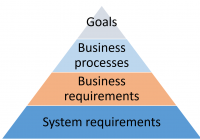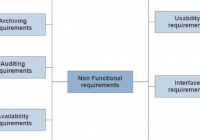Why should a top down approach to requirements gathering be used?
The pyramid above is a reminder of the top down approach. The goals need to be defined first, followed by an understanding of the business processes, the business requirements and then the system requirements. It can be very tempting for the business stakeholders to feel like they already know the solution and jump straight to the system requirements.… Read More »






